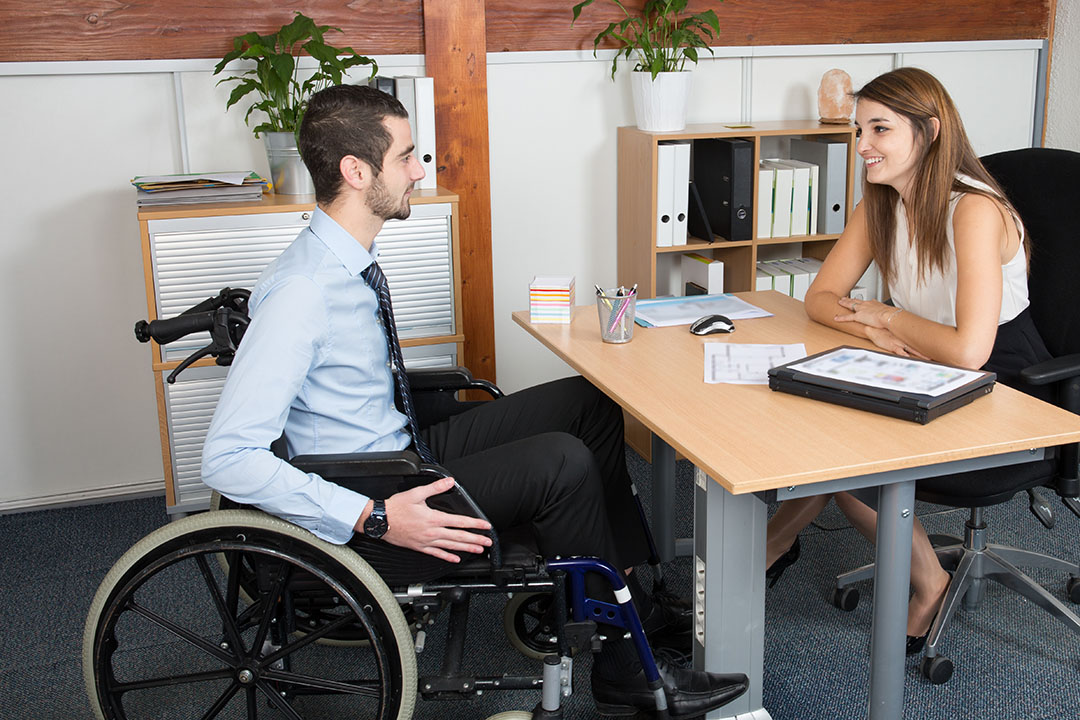Each year, the Association of Workers’ Compensation Boards of Canada (AWCBC) reports on the number of fatal workplace injuries occurring across the country. This number rose from 951 in 2017 to 1,027 in 2018.
While it is never ideal to see the number of deaths increasing year-over-year, you must consider that there were more than 230,000 more workers in 2018, resulting in only a slight increase in fatality rate. Maintaining a consistent rate highlights the importance of safety training.
When safety training, and continued safe practices, are implemented, you can be sure your employees are aware of the correct steps to take to create both a safe working environment and happy employees.
As a member of human resources, you may not consider yourself an expert in safety, but training is most certainly an important part of your job. You are also likely the first point of contact within the company for many new hires. When you show employees that safety is a priority, from their initial orientation, you help set the expectation of safety in all aspects of the job.
Meeting and Maintaining Compliance
In 1978, the Parliament of Canada passed the Canadian Centre for Occupational Health and Safety Act to “promote the fundamental right of Canadians to a healthy and safe working environment.”
Part of this Act was the establishment of the Canadian Centre for Occupational Health and Safety (CCOHS), which has a goal of eliminating work-related illnesses and injuries across Canada. The CCOHS is governed by a tripartite Council of Governors representing the government, employers and workers to create a balanced agency.
In addition to this federal agency, each province and territory has its own occupational health and safety regulations, with specific rights and responsibilities outlined for employers and employees.

Federally, employers have a responsibility to train all employees on potential hazards and what to do should an incident occur. Understanding both the federal and jurisdictional regulations is up to each employer. These can guide the creation of a safety program and are an ideal starting point when looking for topics your employees need to be trained on.
Safety Starts at the Top
In order for workplace safety to be truly effective, education and implementation need to start at the top. Employees are more likely to follow all the proper procedures if management and those in safety positions lead by example. Here are four additional steps you can take to create a safe working environment.
1. Maintain an orderly workplace
It seems to go without saying, but ensuring your worksite is physically set up in a safe way could help eliminate many hazards. The layout of any workplace should have adequate walking areas clear of debris that could cause trips or falls. There should also be appropriate and easily accessible trash disposal and spill cleanup sites.
There is one location common among a large number of businesses that, perhaps unsurprisingly, is one of the top sites of fatal injuries each year: Warehouses. If any of your operations take place in a warehouse, it is important to make your entire workforce aware of common warehouse hazards, such as materials handling, stacking and storage.
Implementing a safe worksite by design, from the beginning, will make it easier to identify and avoid potential safety hazards.
Looking for more online safety training content?
VIEW THE 800+ COURSES AVAILABLE!
2. Maintain an orderly workplace
No matter what kind of hazard may be present on a jobsite, there is some form of personal protective equipment (PPE) that can help protect affected workers. While all Canadian jurisdictions require the use of PPE, the question of who is responsible for providing and paying for PPE varies throughout the country.
The Northwest Territories, Nunavut and Quebec require the employer to provide all necessary PPE at no cost to the employee. Six jurisdictions (Alberta, British Columbia, New Brunswick, Nova Scotia, Saskatchewan and Yukon) offer some guidance regarding who is responsible for the cost.
The remaining jurisdictions (Manitoba, Newfoundland and Labrador, Ontario, and Prince Edward Island, plus any organization falling under federal jurisdiction) are not specific about responsibility for PPE purchases.
However, regardless of who pays for the equipment, it is still up to the employer to ensure all PPE is the correct type and is in safe working condition, and that each employee is properly trained on using the equipment.
3. Conduct safety checks

According to CCOHS, “regular workplace inspections are an important part of the overall occupational health and safety program” of any organization. But how do you carry out effective inspections within your own workplace?
Each Canadian jurisdiction requires the creation of a health and safety committee (or, for smaller companies, the appointment of a safety representative) with certain exceptions outlined in the applicable legislation.
These committees allow workers and management to meet regularly to address health and safety issues within their workplace. Some of the responsibilities of these committees include:
- Recognizing hazards that may cause incidents, injuries or illnesses.
- Conducting inspections each month of all or part of the workplace.
- Participating in the development and implementation of safety programs.
- Responding to employee complaints.
- Setting up programs to improve employee training and education.
- Resolving workplace refusals and work stoppages.
Regular safety audits can also help ensure hazards are identified and addressed, and helps keep safety top of mind for all employees.
4. Don’t forget the basics
When you think about worker safety, you probably consider some of the things discussed here, such as personal protective equipment, safety protocols and thorough training. However, it is important to also consider ergonomics, which is a basic but often-overlooked area of opportunity that aims to increase productivity and reduce discomfort.
From an ergonomic perspective, effective workplace planning along with well-designed equipment can help minimize or eliminate potential risks and reduce worker injury. CCOHS offers guides on many different ergonomic topics such as lifting, lighting and sitting at a desk.
Having your employees complete ergonomic training can also help, as many times this training will cover things you likely never stop to think about but that can be so important to health and safety.
Training Today’s Employees

As the generation raised on technology is now the largest working generation in Canada, overtaking Baby Boomers in 2016, it makes sense that training techniques have changed. Perhaps one of the most significant changes regarding training this new workforce is having mobile-optimized content. After all, 97% of Canadians that fall into the Millennial generation own a smartphone.
The pervasiveness of always-connected mobile devices means learning should be available at all times. Additionally, the content must not only be accessible on a mobile device but it must function just as well as it would on a desktop computer. Think about when you visit a website on your computer versus on your phone. The look, feel and overall usability need to match in order to provide the best experience.
Because we have become a mobile-first society and have developed an affinity for short interactions, such as those common on Snapchat or Instagram, it is necessary for training to be fully engaging from beginning to end. Users are far more likely to stay actively present in a training video lasting around 5 minutes than in a full lecture that could last from 30 minutes to well over an hour.
Microlearning, the common name for these short learning modules, suits the reality of today’s learners very well. You can find them as short as three minutes, meaning they get directly to the point without any unnecessary “filler” content that may distract from the key information.
Retraining to Increase Retention
Throughout your life, whether in school or at a job, it is very unlikely you went about learning something new using a “one and done” method. Repetitive learning opportunities increase the likelihood of retaining the information, which makes for a more effective employee.
For many years, companies have offered — or even required — annual training on certain topics, such as sexual harassment in the workplace. However, more organizations are starting to put employees through retraining on a wider variety of topics, from HR compliance to health and safety.
When it comes to safety training, repetition may be even more important than for other categories of training. Employees not only need to stay up-to-date with regulations, but also must know how to follow all preventive and reactive steps in various situations, making it imperative they fully understand the training.
Understanding Disabilities in the Workplace

While it is important for employees to receive safety training that applies to both the job and the general work area, members of the human resources team should be trained on a number of important topics that are crucial for keeping a business running smoothly.
Many of these HR-focused areas may seem obvious, such as hiring and termination, but one area of focus that likely affects your workplace — whether immediately obvious or not — is employing workers with a disability.
Statistics Canada reports that one in five Canadians aged 15 years or older has a disability. Since the passage of the Canadian Human Rights Act in 1977, there have been increasing efforts to expand provincial and federal accessibility regulations.
Despite continued efforts to provide education and other resources, Canadians with disabilities still face illegal, discriminatory behavior in the workplace, including during the hiring process. While Canada’s national unemployment rate in 2019 was just 5.7%, the lowest in more than 40 years, the rate for Canadians with “mild” disabilities was 24%. For those with “severe” disabilities, the unemployment rate jumps to 69%.
Rather than only thinking about accessibility as something to consider when welcoming a new hire, it should be an ongoing effort that gives all potential employees the best chance at success. Employers should include their accessibility policy with each job opening and be prepared to provide accommodations during interviews at no cost to the candidate.
Providing accommodations to potential employees affords you a better chance at getting the best candidate for the job. Interview accommodations could include adding accessibility to a building, changing the interview location, and providing alternative exam formats or sign language interpreters.
Naturally, accommodation doesn’t end once an employee is hired. On-the-job accommodations can mean a flexible work schedule to account for doctor’s appointments or sleep issues, changes to a workspace to account for aids like wheelchairs or walkers, or providing tools like headphones, screen magnifiers and ergonomic equipment.
It is critical for employers in all parts of Canada to make sure they are familiar with best practices for accessibility.
Taking Control of Safety
When you think of occupational health and safety (OH&S), you likely think of how an employee recognizes hazards and responds to workplace accidents. While this is extremely important, you must also be aware that the field is changing and is becoming more about prevention and hazard identification.
OH&S experts have started focusing on educating employees and identifying potential issues rather than on what is essentially damage control. The hope is that taking a prevention-based approach and trying to stop an accident from ever happening will help companies save the time and money that comes along with mitigating the effects of workplace accidents.
A job safety analysis (JSA), sometimes called a job hazard analysis, task hazard analysis or job hazard breakdown, is one way for your company to identify and work to correct potential dangers in your specific workplace.
Conducting a JSA will help you understand the most dangerous jobs in your workplace, what those specific hazards entail, and corrective and preventive measures you can take to reduce or completely eliminate the likelihood of accidents, injuries and illnesses.
While HR likely wouldn’t be directly involved in this, they would have to be involved in the event of an incident, such as an employee injury, so it is a good idea to make sure all members of HR are aware of the steps of a JSA and how they may be affected.
Now is the Time to Utilize Online Training
On March 11, 2020, the World Health Organization declared the rapid spread of a newly discovered virus named SARS-CoV-2, commonly known as COVID-19 or coronavirus, as a pandemic. Since then, each province and territory has taken action in an effort to slow the spread of the virus.
Many Canadian jurisdictions elected to have non-essential employees work from home. Some businesses, such as personal service providers and retail stores, had to suspend work altogether. Now, across Canada, jurisdictions are going through various phases of reopening to both employees and customers.
While your workers may be adjusting to a new look to their workday, now is an ideal time to implement online training strategies. Online training can help your workforce get caught up on regulatory training requirements or maybe even learn new skills without requiring large numbers of employees to congregate in one area.
For more than 20 years, SafetySkills has worked to make it easy for organizations to receive HR training and OH&S training all on one platform with mobile-friendly, interactive courses. See how SafetySkills makes Canadian safety training easy, no matter your industry, job title or location.


